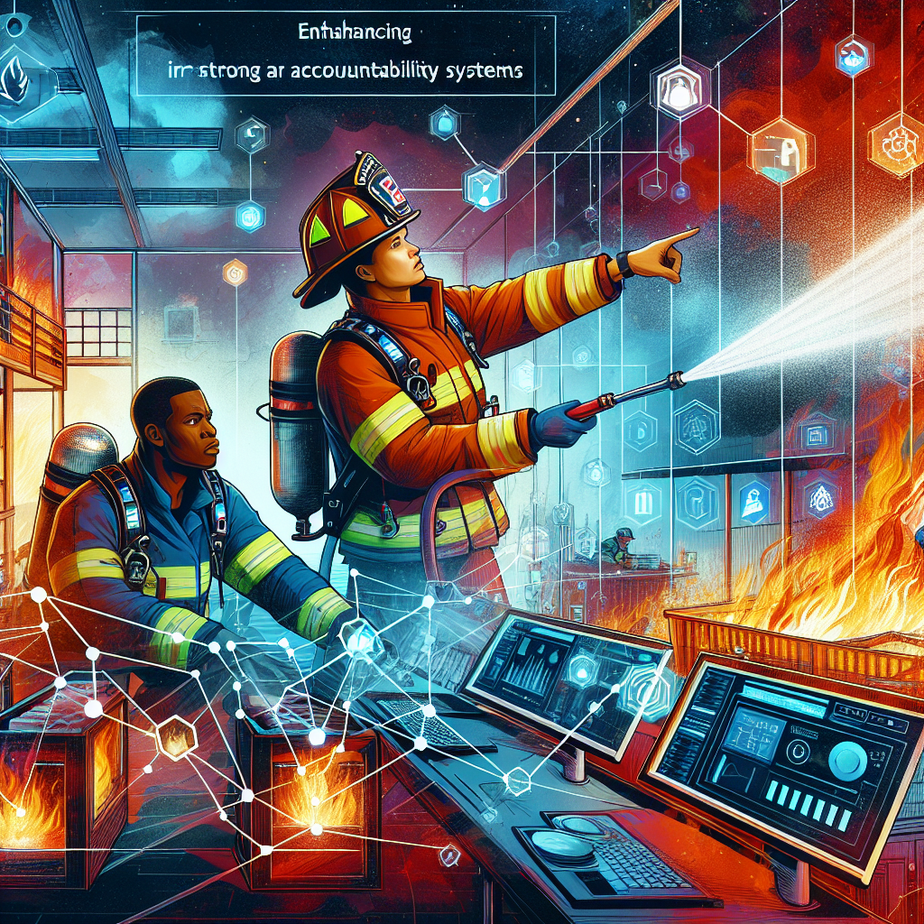🔥 Firefighting isn’t for the faint-hearted. It’s unpredictable, dangerous, and requires split-second decisions. But here’s the thing—firefighters aren’t just running into flames with a hose and hope. One key ingredient keeps everything working smoothly: a rock-solid accountability system. Without it, chaos reigns, mistakes multiply, and lives hang in the balance.
So, how do accountability systems supercharge firefighting efficiency, especially in Australia? Let’s dive in. 🚒
🎯 Why Accountability Matters in Firefighting
Imagine this: It’s a scorching 42°C day, and a bushfire is ripping through the scrub faster than a kangaroo on a caffeine high.🔥 Firefighters from different units rush in, sirens blaring, radios buzzing. Without a system tracking who is where, what they’re doing, and how to pull them out in an emergency, we’re talking about a recipe for disaster.
☑️ Clear accountability saves lives—period.
- It prevents confusion 🧭—Everyone knows their role, reducing overlaps and missed tasks.
- It enhances safety 🚑—If a firefighter is in trouble, incident commanders can pinpoint their location.
- It boosts communication 📢—Sharing real-time updates ensures teams adapt fast.
In short? Accountability isn’t about micromanaging. It’s about survival.
🚒 1. Tracking Firefighters in the Field: Who’s Where?
When a high-intensity fire is raging, no one’s got time for, “Uh…where’s Dave?” 😬 This is where modern tracking systems like Personal Accountability Tags (PATs) and GPS locators make a game-changing difference.
👨🚒 Australia has embraced:
- Tag systems 🏷 used by volunteer and career firefighters to sign in and out of duty.
- Command boards 📋 keeping track of team assignments at firegrounds.
- Real-time GPS 🌍 ensuring commanders know exactly where each unit is.
With an accountability system in place, there’s no second-guessing. Just precision.
📻 2. Keeping the Radio Waves Clear
Fireground radios are lifelines. If comms fail? Disaster. Every firefighter needs to know the right protocol.
🛑 Biggest mistakes in radio communication:
❌ Talking over each other.
❌Using unclear language.
❌ Forgetting to confirm critical messages.
✅ Australian protocols ensure:
- Call signs 🎙 keep chatter organised.
- Status updates ✅ keep commanders in the loop.
- Emergency codes 🚨 instantly flag danger.
You wouldn’t text while driving in a car chase (hopefully). Same logic applies—radio discipline keeps everyone alive.
🔥 3. Personal Responsibility: Every Firefighter Pulls Their Weight
Accountability starts before you even step onto the truck. 🚒 Every firefighter has a duty of care—to themselves, their team, and the people they protect.
🔎 Key responsibilities include:
✔ Equipment checks 🔧—Arriving without working gear? Unacceptable.
✔ Physical fitness 🏋️—Firefighting is tough. You have to be tougher.
✔ Situational awareness 👀—Minds switched on 100% of the time.
When every firefighter owns their role, the whole operation runs smoother. No shortcuts, no passing the buck.
👮 4. Incident Command: The Brains Behind the Brawn
A fireground without strong incident command is like a cricket team with no captain—a disaster waiting to happen.
🔥 Key functions of Australia’s Incident Command System (ICS):
🗺 Strategic planning—Where to attack, where to defend.
🔄 Deployment tracking—Prevent crews wandering into danger zones.
📊 Resource allocation—Making sure help is sent where it’s needed most.
From the front lines to the HQ, structure = efficiency. Without it, operations fall apart faster than a soggy Bunnings snag.
📊 5. Learning from Mistakes: Post-Fire Reviews
Even the best plans sometimes go up in smoke (literally). That’s why debriefs are sacred in firefighting.
🚒 Post-incident reviews uncover:
✅ What worked.
Went wrong.
✅ How to do better next time.
This isn’t about finger-pointing. It’s about making sure next time, things run even smoother. Every lesson learned makes future operations safer, smarter, and faster.
🔥 Final Thoughts: Why Accountability Makes Firefighters Unstoppable
Cutting-edge gear and bold bravery are crucial, but without strong accountability, firefighting becomes chaotic and dangerous. Whether it’s tracking personnel, maintaining clear radio comms, reinforcing personal responsibility, strengthening command leadership, or reviewing incidents post-fire—every step builds trust and efficiency.
So, next time you see a firefighter charging toward the flames, know this: they’re one part courage, one part skill, and 100% backed by an iron-clad accountability system.
🚒 Have a firefighting story or insight? Drop it in the comments! Let’s keep the conversation going. 👇🔥



